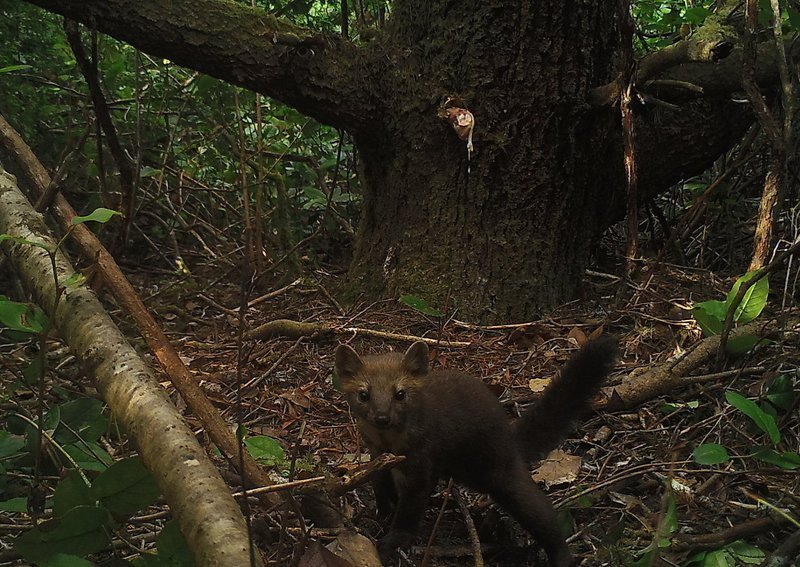Humboldt martens to gain 1.4 million acres of critical habitat in Oregon, California

PORTLAND, Ore. (KTVZ) — Following more than a decade of efforts by the Center for Biological Diversity and Environmental Protection Information Center (EPIC), the U.S. Fish and Wildlife Service on Friday proposed to designate more than .4 million in northwestern California and southwestern Oregon as critical habitat for Humboldt martens, also known as coastal martens.
Humboldt martens are elusive, cat-sized members of the weasel family. Once common in coastal forests in Northern California and Oregon, the population was decimated by widespread trapping and logging of its habitat. Today fewer than 400 of these fascinating carnivores remain, in a handful of highly isolated fragments of the species’ historic habitat.
Today’s proposal calls for five units of protected critical habitat where the martens are known to still live. This includes acreage in Coos, Curry, Douglas, Josephine, Lane and Lincoln counties in Oregon and Del Norte and Siskiyou counties in Northern California.
“Decades of unchecked logging across the Pacific Northwest pushed the Humboldt marten to the edge of extinction,” said Quinn Read, Oregon policy director at the Center for Biological Diversity. “These proposed protections are long overdue, but the Fish and Wildlife Service continues to put the profits of timber companies first. For Oregon’s small and isolated populations of martens to survive, they’ll need much more than disconnected fragments of habitat where they’ve managed to survive and avoid decades of logging.”
In addition to only including occupied habitat, the Service is considering excluding more than 76,544 acres of land owned by the timber company Green Diamond Resources. This is based primarily on a safe harbor agreement it has with the state of California. The agreement allows Green Diamond to continue logging the marten’s habitat in exchange for monitoring, creation of a 2,100-acre reserve on land that is mostly unsuitable for logging anyway, and a speculative proposal to relocate martens to Redwood national and state parks.
Those parks are separated from the marten’s current populations by the company’s land. The Center and EPIC are currently challenging the agreement in court.
“This land is important for the survival and recovery of martens in California, so I hope the Service doesn’t exclude it,” said Read. “The Fish and Wildlife Service is all too often willing to exempt timber or other companies based on scant promises of conservation, regardless of whether it’s enough to help species.”
The Center and EPIC petitioned to list the marten as a protected species under the Endangered Species Act in 2010, but the Service caved to pressure from the timber industry and issued a negative decision in 2015. The groups successfully challenged that decision, and a federal judge ordered the agency to reevaluate the marten’s status.
The Service subsequently announced its proposal to list the Humboldt marten as a threatened species in October 2018. That decision triggered a deadline for a final listing by October 2019, but after the agency failed to act, the Center and EPIC filed suit to require it to finalize protections, which it did in September 2020.
Martens are threatened by the ongoing logging of mature forests, loss of closed-canopy habitat to wildfires, rodent poison used in marijuana cultivation, and vehicle strikes. California banned trapping of Humboldt martens in the 1940s, but Oregon did not follow suit until 2019, after a petition and lawsuit by conservation groups. The animals have been wiped out from 93% of their historic range.
Martens have triangular ears and a bushy tail and are related to minks and otters. They grow up to 2 feet long but weigh under 3 pounds and must eat one quarter of their body weight daily to support their high metabolism. Martens eat small mammals, birds, berries, reptiles and insects and are eaten in turn by larger mammals and raptors.



